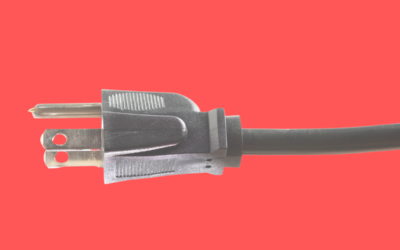Similar to OpenShift, Heroku grants you a limited set of free resources each month (750 free dyno-hours per app) that you can leverage to run Kill Bill and the Kill Bill admin UI — Kaui, for free, in the cloud. This article will guide you through it.
The same word of caution applies here as well regarding scalability: your free 750 dyno-hours will allow you to run one 1X dyno for an entire month free of charge, which is limited to 512MB of RAM. This is a bit small for the JVM (especially if you install Kill Bill plugins). While it is probably good enough for quick prototyping, we recommend you use a 2X dyno for your production environment.
To create a Heroku account, go to https://id.heroku.com/signup/www-pricing-top. Even though Kill Bill will run free of charge, you need to verify you account by entering your credit card at https://heroku.com/verify. This is required as MySQL support is provided as an add-on only (and you need to verify your account to install add-ons, even free ones).
The first step is to install the Herok Toolbelt by going to https://toolbelt.heroku.com/ and verify you can log-in by running
heroku login
To deploy WARs, you need to install the heroku-deploy CLI plugin:
heroku plugins:install https://github.com/heroku/heroku-deploy
Kill Bill deployment
Grab the latest jar-with-dependencies.war artifact from Maven Central and create our kbdemo app, which will be running Tomcat and MySQL:
heroku create kbdemo heroku deploy:war --war /path/to/killbill-server-*.war --app kbdemo heroku addons:remove heroku-postgresql:dev --app kbdemo --confirm kbdemo heroku addons:add cleardb --app kbdemo
Kill Bill system properties are defined via the JAVA_OPTS environment variable. You can inspect it by running:
heroku config --app kbdemo
Locate the CLEARDB_DATABASE_URL variable from that output, which should look like mysql://USER:PASS@HOST/DB?reconnect=true.
Populate JAVA_OPTS as follow:
heroku config:set JAVA_OPTS='-Xmx512m -Xss512k -Dcom.ning.jetty.jdbi.url=jdbc:mysql://HOST/DB -Dcom.ning.jetty.jdbi.user=USER -Dcom.ning.jetty.jdbi.password=PASS -DANTLR_USE_DIRECT_CLASS_LOADING=true' --app kbdemo
The final step is to install the Kill Bill DDL. Fetch the latest Kill Bill schema, and install it:
ruby -e "$(curl -skSfL http://kill-bill.org/schema)" > /var/tmp/ddl.sql mysql -uUSER -p -HHOST DB mysql> source /var/tmp/ddl.sql
That’s it for Kill Bill! You can restart the app and check the logs by running:
heroku restart --app kbdemo heroku logs -t --app kbdemo
The first thing you want to do is to create your own tenant:
curl -X POST
-u admin:password
-H 'Content-Type: application/json'
-H 'X-Killbill-CreatedBy: admin'
-d '{"apiKey": "bob", "apiSecret": "lazar"}'
http://kbdemo.herokuapp.com/1.0/kb/tenants
For more details on this, check our Getting started guide.
Kaui deployment
To install Kaui, let’s first create our skeleton Rails app:
rails new kauidemo --database=mysql cd kauidemo rm -f public/index.html
Next, mount Kaui inside this skeleton app:
gem install kaui kaui . rake kaui:install:migrations
Configure Kaui by putting your tenant credentials in config/initializers/killbill_client.rb:
# Kill Bill tenant credentials KillBillClient.api_key = 'bob' KillBillClient.api_secret = 'lazar'
Add the Heroku specific gem to your Gemfile:
gem 'rails_12factor', group: :production
To deploy Kaui, we need to create a git tree for Heroku:
git init git add . git commit -m "init"
Create a new app:
heroku create kauidemo # Enable user-env-compile (this is for config vars to be present during the build) heroku labs:enable user-env-compile -a kauidemo # Setup the git tree git remote add heroku [email protected]:kauidemo.git
Configure the following environment variable to point to Kill Bill:
heroku config:set KILLBILL_URL=http://kbdemo.herokuapp.com/ --app kauidemo
Similarly, override DATABASE_URL with the content of CLEARDB_DATABASE_URL of the kbdemo app (replace the mysql:// prefix with mysql2:// to match the adapter name).
Push your changes to deploy your application:
git push heroku master
And finally run the migrations:
heroku run rake db:migrate --app kauidemo
If you see an error such as User 'USER' has exceeded the 'max_user_connections' resource, wait a few minutes before retrying.
You should be all set! You can now point your browser to http://kauidemo.herokuapp.com/ and log-in (default credentials are admin/password).
Jump to the “Create an account” section of our Kill Bill in 5 minutes tutorial to create your first customer.


